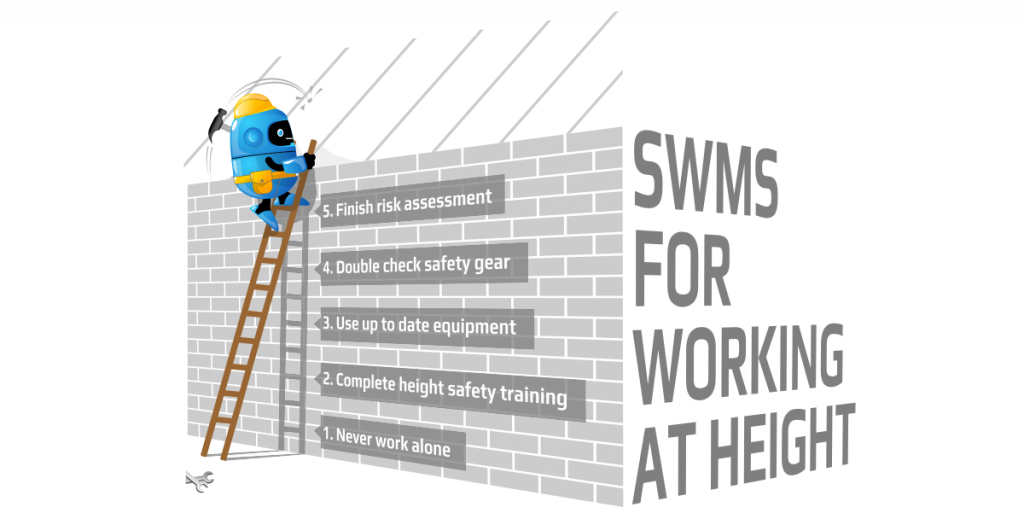Risk Assessment For Working At Heights

Risks in construction are hard to pinpoint but working from heights is one of the more obvious hazards. Even you’re an expert tightrope walker, it’s an accident waiting to happen as are many things in high risk construction work. A simple hazard and risk identification process can prevent a dangerous fall but what should a safe work method statement for working at heights look like?
Every worksite is different so there is no common SWMS template that can be applied to all. However there are many core control methods that can show you how to manage risk at heights.
1: Never work alone: two sets of eyes are more powerful than one. If someone is working from heights, than they’ll need a pair of eyes on them to identify risks that could be otherwise missed.
2: Height safety training: learning about the specifics threats associated with working at heights is the first step to preventing them. Knowing what can go wrong will push workers to reach for those higher OHS standards.
3: Up to date equipment: having current inspection tags on all equipment will ensure that safe operating procedures are backed by reliable gear.
4: Double check anchor point and lanyard: the length of these must not exceed the impact point.
5: Finish the risk assessment form first: don’t gamble with the legal consequences of skimming past the OHS action plan. Hazard and risk assessment procedures must be completed before work begins otherwise all duty holders can become liable.
This is by no means an exhaustive list but if you’re looking for something more comprehensive, like a free SWMS template, you can check out the one developed by WorkSafePro. Let us know what you think on Facebook or Twitter.

